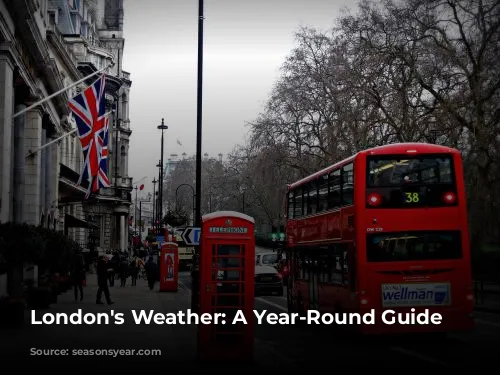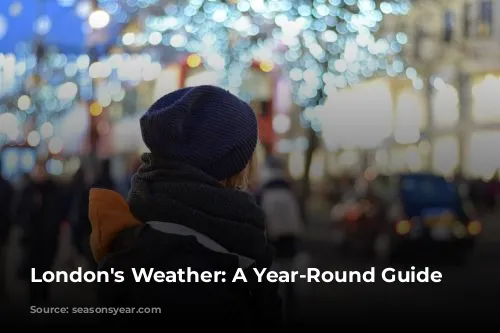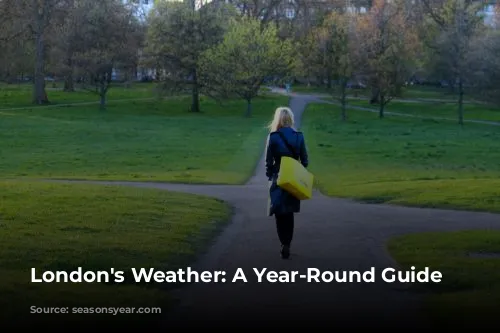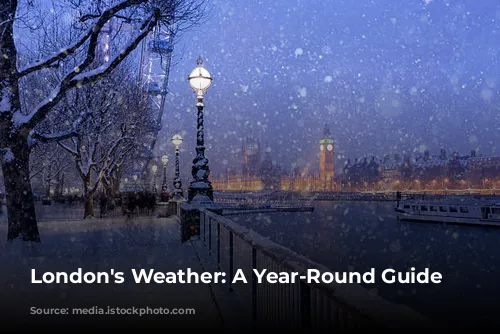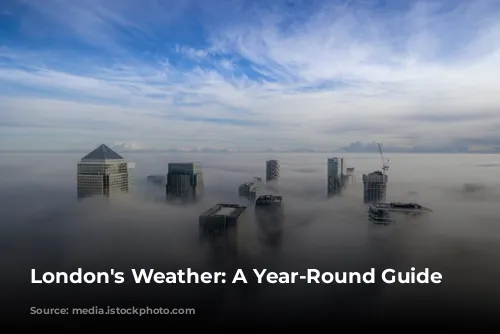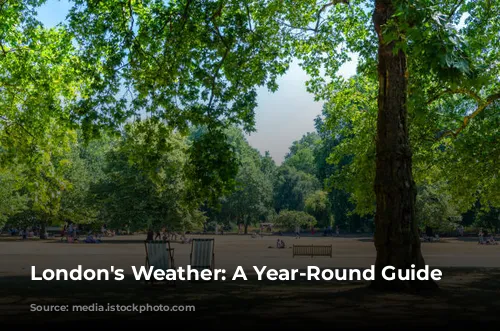London’s weather is as famous as its landmarks, known for its frequent drizzle, occasional fogs, and mild temperatures. This article will guide you through the city’s weather patterns, offering insights into each season and highlighting key events.
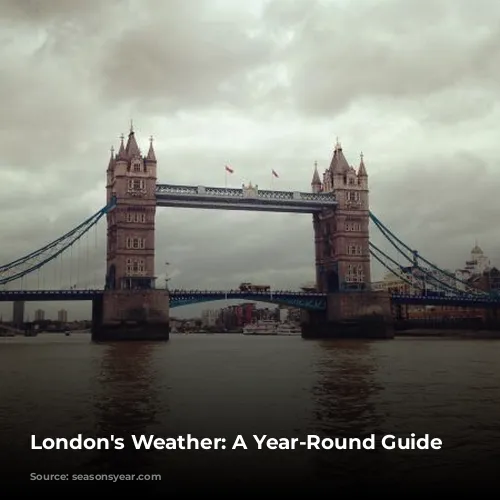
A Moderate Maritime Climate
London experiences a moderate maritime climate, meaning it’s influenced by the nearby ocean. This results in high humidity and those legendary fogs that often grace the city. Rain is fairly evenly distributed throughout the year, though the amount isn’t as heavy as you might expect. London receives about 610 millimeters (24 inches) of precipitation annually. You’ll find plenty of drizzly days, but actual showers are less frequent.
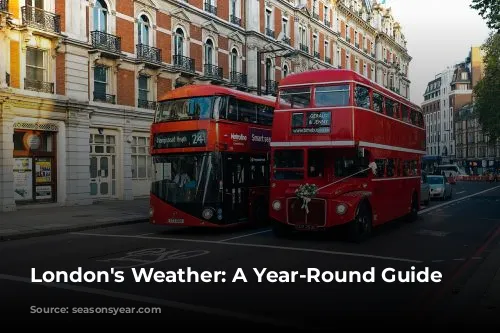
Spring: A Time of Renewal
Spring in London is a time of gradual warming and renewed life. Although temperatures start to climb in March, be prepared for sudden drops and even snow flurries early in the season. By April, the weather stabilizes and temperatures reach a pleasant 13°C (55°F). Mild sunshine peeks through the gaps in the drizzle, and primroses emerge from the soft soil, painting the city in shades of green.
May is a fantastic time to visit London, despite the occasional rain. Temperatures rise to 17°C (63°F), and the air is filled with the fresh fragrance of blooming vegetation. With longer daylight hours, you’ll have plenty of time to explore the city’s vibrant streets.

Summer: Sunshine and Occasional Surprises
London’s summers are typically mild, with an average daytime temperature of around 20°C (68°F). However, the weather can be unpredictable, with sudden shifts in temperature that can bring warm spells reaching 25°C (77°F) or cool spells dropping to 14°C (57°F). This unpredictability extends to precipitation, with the potential for week-long rain or unusually dry periods.
While completely clear skies are rare, London’s summer days are often partly cloudy with clearings. Summer evenings are cool, so autumn clothes are recommended. Evenings are comfortable, with nighttime temperatures reaching a pleasant 19°C (66°F).
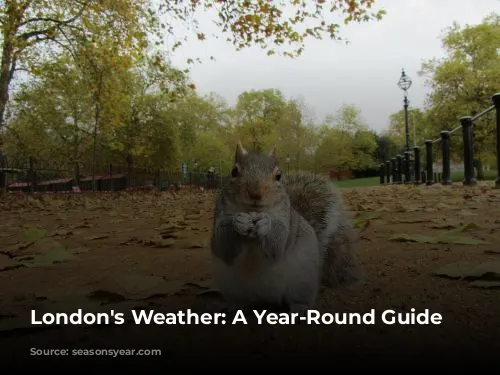
Autumn: A Palette of Hues
As September arrives, London starts to transition towards autumn. Temperatures and daylight hours decrease, but this is still a great time to visit. Nature puts on a stunning display, with leaves turning shades of gold, brown, and crimson. Damp air and fallen foliage make London’s parks particularly enchanting.
October brings rain and dampness, with temperatures averaging 15°C (59°F) during the day and dropping to 6°C (43°F) at night. The city is shrouded in a melancholic autumn haze, as days shorten and the lights of London begin to twinkle. November is a dull month, with frequent drizzle and blustery winds. Average daytime temperatures hover around 10°C (50°F), and occasional snow flurries can even occur in late October.
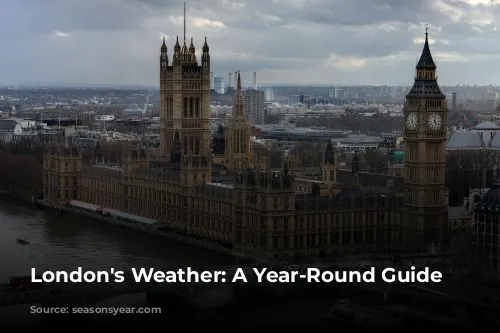
Winter: A Time for Festive Cheer
Winter in London is a season of wetness and cold. Daytime temperatures range from 5°C to 7°C (41°F to 45°F), dropping below 0°C (32°F) at night. The central part of the city is slightly warmer, due to smog and a denser population. Snowfall is rare and usually occurs after sudden temperature drops.
London’s winter can be challenging, with fogs, snow drifts, and gusty winds often disrupting airports and other transportation. Snowfall can cause disruptions, but thankfully, it rarely lasts for more than a week. Despite the cold, London’s winter is bright and attractive, especially during the festive season. The city comes alive with Christmas cheer, creating a magical atmosphere.
